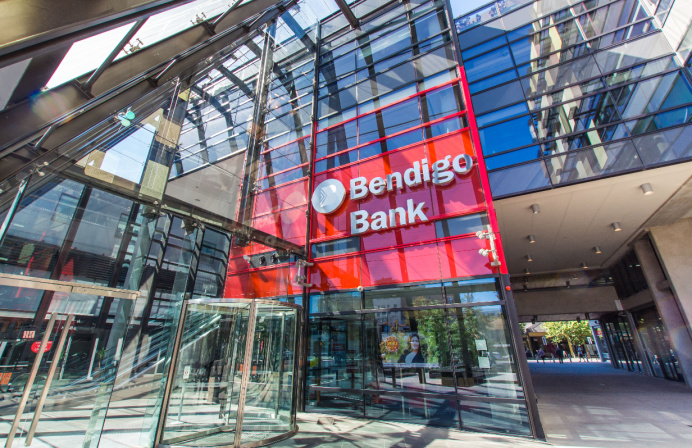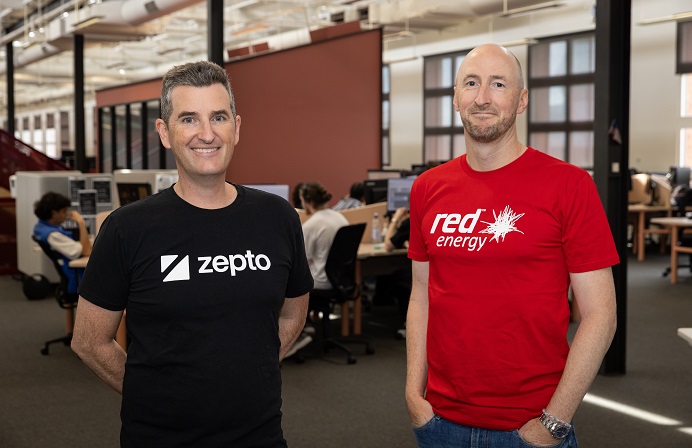
Bendigo and Adelaide Bank has released details of its expanded partnership with database developer MongoDB – backed by a newly built and customised generative artificial intelligence (GenAI) pair programming capability – which it says has both accelerated the delivery time and slashed the cost of its core application migration by 90 per cent.
The capability, which leverages MongoDB Atlas (a multi-cloud ready database platform for programmers), and a Bendigo-customised GenAI engineer assistance tool, is backing the bank’s rapid migration and modernisation of legacy applications to cloud, as well as their conversion to a microservices-based architecture.
MongoDB boasts that the capability – debuted by the bank in late 2023 in a global-first deployment – has slashed both the time and cost required to migrate core applications to cloud by nine-tenths.
Bendigo and Adelaide Bank chief information officer Andrew Cresp said the developer’s technology is playing an increasingly outsized role in the bank’s wider core systems consolidation program.
(Cresp confirmed to FST Media that the bank successfully shuttered yet another of its core systems – down from four to three systems as of last week – seeing rapid progress on its FY2026 goal of maintaining just a single core ledger).
Over its thus far three-year consolidation journey, the bank has slashed its application count by half – from a peak of 650 apps down to 326 currently.
A key differentiator of this program, according to Cresp, was its focus on getting the “hardest, most important or most changeable workloads to cloud”, which, he said, would deliver the “most impact for [Bendigo] customers”.
The MongoDB team was also embedded with the bank for three months in late 2023 to support the deployment of its technology suite, which includes the MongoDB Atlas and MongoDB Relational Migrator (a cloud migration tool), and to train the bank’s engineering team.
Consolidation and refactoring of the bank’s legacy apps has been critical not only for its digital innovation objectives, but also in slashing ICT cost, said MongoDB senior vice president of APAC Simon Eid.
“Every financial institution has this issue of these legacy applications that are… either not supported anymore, they don’t have the skill sets for, or it’s too risky for them to move,” he said.
“That is the problem we’ve just solved now for Bendigo”.
Eid added: “Some of those institutions who partner with us, without naming them, say that just to maintain those legacy apps costs them $500 million a year.”
While GenAI is making headlines (for good or ill) for its creative endeavours, Eid said the technology has considerable value as a reliable and safe coding workhorse. The technology has been deployed for the bank’s engineers to help “design, refactor and decompose monolithic apps” into cloud-native, microservices-ready architectures, Eid said – even supporting the conversion of legacy apps with “no documentation”.
The MongoDB-developed GenAI toolset was uniquely customised for Bendigo and Adelaide Bank, it said, including scripts and prompts tailored for the bank’s own tech stack.
GenAI is also being utilised in user acceptance testing, a typically “nightmarish” prospect for devs and testers, automating 90% of this process. Bendigo testers reported that the tooling effectively reduced the time spent running application test cases from over 80 hours to just five minutes.
By leveraging GenAI, Eid argued it is now quicker to modernise these apps entirely than doing a “straight up lift and shift”.
“Bendigo and Adelaide Bank has eliminated volumes of routine code writing and programming work with automated generative AI tooling, which has empowered the bank’s developers to innovate with increased agility and more quickly deploy highly available and performant application features that enhance end-user experiences,” MongoDB said in a statement.
“Legacy migrations can otherwise be long, expensive processes, but these solutions enabled Bendigo and Adelaide Bank to complete the migration with 90 per cent less human effort and at one-tenth of the cost of a traditional legacy migration.”
Bringing an antiquated system into the cloud age
The MongoDB team, in the final months of 2023, was tasked with modernising the bank’s Agent Delivery System (ADS) – a legacy retail teller application utilised by non-bank business partners, including pharmacies and newsagents, to provide Bendigo banking services.
The bank had sought a complete rebuild of the now antiquated ADS for a microservices- and API-ready architecture which it said would “facilitate fast, easy data flow between the bank’s applications, third parties, and consumers”.
Modernising the ADS, the bank said, would make it easier for its developers “to work with data and create innovative, accessible banking services”.
Atlas would serve as the underlying platform for the newly architected ADS.
MongoDB boasts that the entire migration of the ADS was completed in just three months using its GenAI-backed technology suite.
“Prior to partnering with MongoDB, the bank ran the system on a legacy relational database that lacked the flexibility to easily evolve to reflect the complex data mapping requirements that today’s modern applications demand,” the database developer wrote.
“Because of these database-related challenges, the bank’s analysts and developers were committing significant effort to complex database management tasks in order to keep the application running.”
In a pre-MongoDB world, Cresp said it would have been particularly difficult to support a business case and provide costings for such a migration – one, he said, that would typically require the running of “two separate security stacks, two separate networks, and separate approaches.”
He added: “The great thing about [Mongo’s] approach is that it offers a really safe way of migrating. It’s a really good way of making sure that we’ve got the testing right and the documentation right at the very start of the program, which is usually something that’s lacking with these older applications.
Crucially, the use of GenAI was done “safely” and with minimal risk, Cresp said, with the bank using its own APIs for the large language model, which ensured that data was not sourced from outside the Bendigo ecosystem and that customer data would and could not be exposed.
“This is code that [the GenAI system] documented, created a test script for, it rewrote, and got running in production.
“Running it in production… that’s not just a 30 per cent uplift on pre-writing some code for a developer… it is genuinely a game-changer.
“[It’s left] our developers free to focus on other ways they can deliver great outcomes for our customers.”
According to Cresp, the successful migration of the ADS is now serving as a basis for the complete modernisation of the bank’s legacy systems.
“We’ve started by modernising our most critical applications, and next, we intend to tackle a number of other outdated legacy applications across the bank, putting us on track to meet our target of 50 per cent of our critical workloads in the cloud by the end of the year.”
He added: “It’s actually messed up some plans – in the best way – in that we’ve found a better way of addressing that problem now by getting to the target site from an API and cloud perspective.
“We’ve actually had to adjust our plans to be more strategic as a result of what this use case has done for us.”
Cresp, further lauding the MongoDB partnership, said the developer’s toolkit has unlocked the bank’s ability to scale at pace.
“This is a huge advantage for us. And the amount of automation you get out of it, and that it’s almost self-healing as a database.
“Fundamentally… MongoDB’s technology sets us up to be able to use all the modern capabilities that we’ve got in our modern applications and give us the ability to move really quickly for our customers.”
He also praised MongoDB’s contribution as a migration support partner.
“Because they’re database-focused, they’re in a unique position to actually help us migrate applications and think about it differently than the other hyper scalers, because they’re in the area where the application data is.
“This program really highlights, as a global first use-case, that we as a regional bank are a very relevant organisation globally as an innovator.”





